By Dean Askin, filed under Disability Awareness and Confidence, Inclusive Hiring, Ontario Disability Employment Network
In 2021, we’re at a watershed moment in history: There’s more commitment to, action on and conversation about disability inclusion in the business sector than ever before.
There’s a significant “but,” however.
In its 2020 The Global Economics of Disability report, Toronto-based The Return on Disability Group noted, 90% of companies say they put a priority on diversity. But only 4% include disability in their diversity, equity and inclusion (DEI) mandate.
Part of the problem? A lack of understanding about the diversity of disability.
Businesses need to understand two very important things about disability:
- It’s diverse — no two people who have a disability are the same. As the saying goes, “When you have met a person who has autism, you have met one person!”. It’s applicable to everyone and anyone.
- It needs to be part of the conversation on diversity in your business.
Top 5 disabilities are invisible
What do you think of first when you hear the word, “disability”? A person who uses a wheelchair? Someone who has Down syndrome?
Many people commonly think of a visible physical or developmental disability when they hear the word, “disability.”
Employment and Social Development Canada says the top five disabilities are:
#1 – Pain (9.7%)
#2 – Flexibility (7.6%)
#3 – Mobility (7.2%)
#4 – Mental health (3.9%)
#5 – Dexterity (3.5%)
Here’s the thing about the diversity of disability and disability-inclusive hiring: In your business, you likely already have employees who have an invisible disability, and you’re not aware of it.
Not unless the person feels safe and comfortable in your company culture. Comfortable enough to reveal and openly talk about their disability without fear. The fear that they’ll be looked at or treated differently than other staff.
The two views of self-identifying
It’s also important to understand the different perceptions of disability by those who live with them. The diversity of disability extends right down to:
- How people identify with it
- The disability language they use
Some people self-identify as a “disabled person.” They choose to self-identify with their disability first. Others as a “person with a disability” or a “person who has a disability.” That’s person-first identity.
There’s actually a third perspective of disability and self-identification that’s important to understand. Australian comedian Stella Young puts it this way: “My disability exists not because I use a wheelchair, but because the broader environment isn’t accessible.”
Self-identity and the language of disability is nuanced. Understanding the nuances is an important part of understanding the diversity of disability.
The authors of a 2019 research report, Disability, Diversity, and Corporate Social Responsibility: Learning From Recognized Leaders in Inclusion, bluntly state that human resources professionals still have much to learn.
“HR researchers and practitioners have barely breached the surface in considering the complexity of disability as an intersectional facet of identity…,” they wrote in the report.
Agency-business alliances help
Linda Ivory, Organizational Development Consultant – Diversity and Inclusion at Halton Health Care in Oakville, ON, says her organization “started to understand the diversity of the disability talent pool through our employer partnerships” with employment service agencies that specialize in disability-inclusive hiring.
“Over the years we’ve hired people with disabilities, but the numbers were low. I can’t sugar-coat it,” she said at a March 2021 virtual Rethinking Disability conference held by the Ontario Disability Employment Network.
“And it wasn’t until we collaborated with our [community employment service agency] partners that we realized how we could learn from them, and our community, and help. So on our journey, like many other organizations, we didn’t have much in place when it came to DEI.”
More important, says Ivory, are Halton Health Care’s values: compassion, accountability and respect.
“And I really draw attention to respect when it comes to understanding the diversity of disability,” she emphasizes.
Understanding leads to better HR and business outcomes
“Start by understanding the barriers that discourage people with disabilities from applying to work for you,” Caroline Casey, founder of The Valuable 500, wrote in a March 2020 Harvard Business Review article.
Numerous reports, studies and statistics all show the same thing: When businesses are intentional about disability inclusion and focus on it, there are both bottom-line and brand benefits.
Enabling Change is a new, Getting to Equal 2020: Disability Inclusion study by Accenture. It found, businesses “most focused on disability engagement” grow their sales 2.9 times faster, and increase profits 4.1 times faster, than other companies.
It’s important to have at least a basic understanding of the diversity of disability. Otherwise, you’re putting your organization at a disadvantage. When you understand the diversity of the disability talent pool, you can be more successful with inclusive hiring.
Awareness and understanding go together
Disability inclusion also drives cultural change within an organization. When you:
- Ensure disability is always part of the DEI business conversation
- Proactively, intentionally recruiting from this diverse talent pool
You are:
- Showing leadership in your business and in your sector
- Setting an example for others to follow
But a lack of real understanding about the diversity of disability can mean your business isn’t as progressive as the leadership team may think.
“We’d…describe even the most progressive organizations as ‘divers-ish.’ That’s the word we used when we launched our Valuable 500 campaign,” Casey wrote in the HBR article.
Understanding the diversity of disability really starts with everyone in your business having more awareness and education about disabilities. With education comes increased awareness and confidence. This helps you be a better leader, manager, co-worker or employee.
In part two of this National Disability Employment Awareness Month series, we’ll look at why Disability Awareness and Confidence Training at all levels of an organization, is crucial for embarking on a successful disability-inclusive hiring journey.

